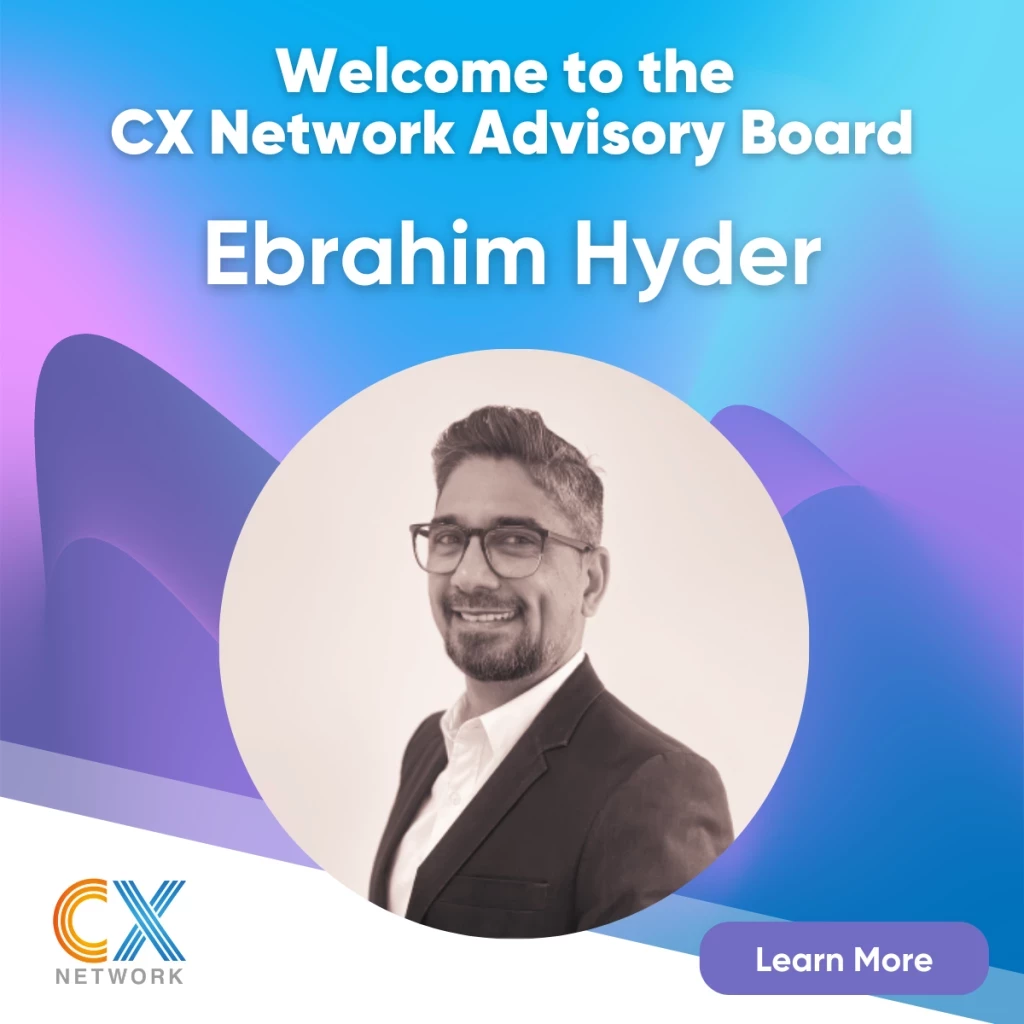The untapped potential in every contact center
Devon Mychal, senior director of product marketing for Talkdesk, explains how practitioners can use data to put the contact center at the heart of their organization’s strategy
Add bookmark
When CX Network researched the Global State of CX 2023, a number of clear trends emerged: CX leaders have a lot of their plates, everything is going digital and customers are more demanding than ever.
Against this backdrop, however, Devon Mychal, senior director of product marketing for Talkdesk, says that CX leaders and practitioners have a golden opportunity to transform the standing of the contact center by leveraging the data it collects to inform strategies across the wider business.
CX Network: Digital CX was named as the trend practitioners believe will have the greatest impact on their role this year. Digital CX however, is a broad topic. To generate the strongest customer satisfaction benefits, which areas of digital should practitioners focus?
Devon Mychal: We are at an inflection point of mass adoption from both the consumer expectation point of view and the organizational point of view: more and more contact centers are moving from on premise to the cloud, where you have the best opportunity to implement a digital channel mix.
To generate the strongest customer satisfaction from digital CX most organizations need to focus on getting the foundations of digital right. As we reach this inflection point a lot of companies are still deploying their first set of digital channels, or they have taken an isolated approach and are finally exploring how to make it omnichannel model by unifying the routing and analytics.
There are two things companies need to keep in mind.
The first is to understand who your customer is. There is a potential trap for organizations thinking they need every service channel, but that is not always true. You need to understand who your customer is, where they want to be engaging with you, which channels are appropriate for the profile of customer you serve and focus on deploying that and getting service right for those channels. Offering all the business messaging and social listening, live chat, voice, but providing a subpar experience across more than half of those channels checks boxes for digital but doesn’t help your customer.
The second is to take a true omnichannel approach. That word has been overused and diluted, but for Talkdesk it means unified routing across all channels, a single pane of glass in terms of the human assisted channels and agent access to customer history data during live service.
Those may be the foundations, but they are so critical to get right. You do not want to start reaching into the cutting edge until you have that in place.
The CX trends influencing the work of CX Network members in 2023

CX Network: What types of contact center capabilities do CX leaders need in order to stay ahead of the top 10 trends of this year?
Devon Mychal: Artificial intelligence (AI) for CX is what they need to keep an eye on. It is moving so fast and there have been some really exciting leaps in capability, but this is probably the trend that is most likely to get away from the laggards.
Large language models (LLMs) and ChatGPT are a hot topic right now and they are going to change how a lot of the underlying technologies we use in contact centers work, making them much more effective.
There are three areas that will benefit substantially from this: virtual agents, agent assistance and interaction analysis.
Virtual agents represent true conversational AI. They can have multi-turn conversations that are more human and more effectively able to contain a query, allowing customers to self-serve effectively. With ChatGPT and LLMs, these models are getting very good at zero shot classification. Without any training or reinforcement, these models can understand what I am trying to accomplish, now matter how I phrase it, as well as matching my intent to the correct answer for what I am trying to solve. This is all in a more effective way than anything we have ever seen before. The true value is in the performance and what we will see soon is self-service and VA experiences that are extremely effective and humanized. It will be difficult to distinguish between agent and bot.
In agent assistance, LLMs will allow for better understanding of intent, helping them do a better job at providing the right answers to agents as customers ask them. The core function of this is understanding what customers want to do in real time. LLMs are much better at that than any technology we have seen before in the field of AI and they are getting even better at it at a blistering pace.
On interaction analytics, we have talked about self-service and making human-assisted service become more efficient. The next step is looking holistically at self-service across channels – digital, voice – and mining all of them for insights, not just on service but other steps in the journey. Customers are more unsatisfied not because of a service interaction, but usually about a product and that is where there is a rich source of data that is available but underutilized today.
This is why I believe the future for the contact center is bright. It is not just about being a profit center or using it to upsell. The contact center is one of the best sources of business intelligence available to your organization and today that data remains largely untapped.
Once that clicks for both the CX leaders responsible for the contact center and the chief of product, the operating leader, those people who will understand the potential, we will see businesses become much more agile in the way they react to their customer’s wants and needs.
CX Network: Could the use of these technologies elevate the role of the CX leader, particularly if they have a contact center – and therefore a treasure trove of customer data – in their remit?
Devon Mychal: Absolutely.
They will become a trusted advisor to all the other important decision makers in the company if they are the owners of this data and the analysis around it. At the very least, they will be expected to implement this technology in a way that makes it broadly available to the business, so other leaders can self-serve and analyze.
The model will depend on the specifics of that business and how they want to operate but having that data available will become the expectation, whereas today it is only the forward-thinking companies that are doing this.
CX Network: We have covered the “must have” capabilities, but what do you believe will be the next generation of digital CX capabilities and how should practitioners and leaders prepare?
Devon Mychal: The first is this idea of broader customer data unification. We interact with business across so many different channels, whether they are direct service or even just our behavior on a website, marketing emails and campaigns. All these things generate rich data but they are not being used together very effectively yet.
The emergence of CDPs and more cutting-edge techniques to clean and unify data from disparate sources has allowed companies to create these data lakes where they have a unified view of the customer and a really deep understanding of what I am doing, what I want and what I need across all these sources.
Digital advertising can already predict customers behaviors based on algorithms and data, but here we can take the rich data sets that are constantly evolving, bring it all together, then use machine learning (ML) and AI to understand that and predict things about the customer that will add value.
This is not about selling me something new based on what I have bought, but using data to engage with the customer. The concept behind it is customer lifetime value (LTV) and it is about developing the customer relationship in a much more sophisticated way than we do at present.
For example, an ecommerce business that specializes in outdoor equipment has a customer searching for items they would need on a cold weather trip. There are a number of flags in the service interactions and digital behavior that show the customer is about to take this trip. But instead of trying to sell more stuff that could be useful, they could reach out about previous purchases and offer a free upgrade, or they could direct mail or message relevant content to them, for example how to do cold weather camping right. These engagements are value adds that do not immediately lead to sales, but they say ‘this business cares’.
It is thinking about the experience I will have with their products, rather than selling more products, by fostering a proactive relationship that is a value add. That is how you build long term loyalty.
If you know you are always going to get that level of engagement you are less likely to buy on price – you are buying on experience.
Previously, organizations needed a lot of in-house expertise to deliver these experiences, but AI is democratizing access to the technology that enables this for more organizations in future.
CX Network: Looking beyond the challenges that individuals face in their work, what challenges do you believe CX faces in 2023?
Devon Mychal: Talking more broadly, we are going to look back on 2022 and 2023 and view it as an inflection point for this space.
There is this unique combination right now of the global economic environment driving a more cost-conscious business landscape and hiring freezes. In the service industry, contact centers are still experiencing high levels of turnover, they are having trouble getting the talent they need in place, they are more cost conscious, they are short-staffed and there are rising customer expectations to meet.
We hear contact center interaction volumes are increasing, customers are more easily frustrated. These challenges, however, will force rapid change in a space that has not traditionally been very quick to adopt change and cutting-edge technology. That is why we are seeing an inflection point.
Digital CX is the number one trend this year, not because contact centers suddenly decided to change, but because they need to change.
They need deflection and more efficient channels, because they have fewer people to meet demand. This will lead to an inflection point on the adoption of technology that benefits both the contact center and customer, but that will open up new challenges.
CX leaders, practitioners, folks who are experts on their current operating models are going to become experts on a wide range of emerging technology that is changing very quickly.
Instead of focusing on making their day-to-day operations more efficient, new skills are going to come into play. They will have to design new systems and processes, they will also have to become more sophisticated data experts who can draw on a wider range of sources. The job is going to become harder but more exciting, potentially for some of these leaders – and particularly on the IT and management side.
Unleash unrivalled loyalty: dive into the Global State of CX

Harness emotional connections, navigate shifting expectations, and align your brand values for success. Be inspired by top brands such as Amazon Games, Nike, Roche, John Holland Group, Humm Group, Wayfair and Talkdesk, explore pivotal roles of social causes and sustainability.
Learn More

























